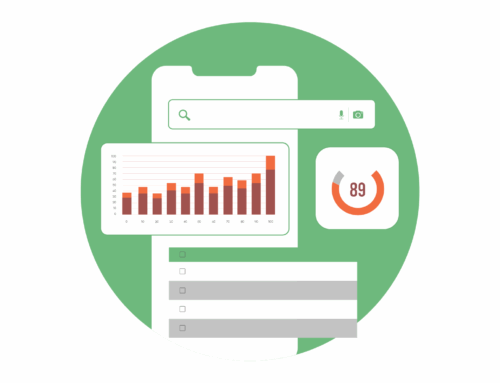SEO can be scary…Especially when you’re just starting out.
It takes a lot of effort, time, and hard work to rank a single web page on Google.
Yet most people don’t even get any organic search traffic even after trying soo hard.
In fact, according to a study, 90% of the pages get no traffic from Google.
And as a beginner, you might feel lost in this gigantic ocean of Search engine optimization.
The worst part, above all, is when you go on the wrong path without a proper guide.
So to help you kickstart your SEO journey, we’ll be sharing with you the 9 best SEO tips for beginners that you can apply throughout your SEO journey.
And most importantly, all of the tips that we’re going to share with you today will be highly practical without any bluff.
Table of Contents
9 SEO Tips For Beginners in 2022
1. Create Exceptionally Great Content
If you want to win in SEO every single time, you have to create super high quality and exceptionally great content without any compromise. Because, after all, SEO is sorely based on content.
Think about it this way: What’s the primary goal of Google?
To provide the right and helpful information to their users, right?
If you don’t live up to the mark and your content doesn’t really solve the user’s problem, your ranking won’t sustain for a long time, even if you get a ranking boost.
Google is coming up with new major algorithm updates almost every single month to make sure the content quality of the top-ranking pages stays top-notch.
But the main question is: How can you create great content that people would love to read and satisfy the Google algorithm simultaneously?
Unfortunately, there’s no secret sauce available to help you write good quality content like a magic trick.
But there’s a solution for that.
Whenever you create any content, ask these three questions to yourself?
– Would I love to read this piece of content?
– Does this content deliver what the searcher wants?
– Does this content answer the questions that the searcher might have on their mind?
If you get positive feedback for these questions, you might be on the right track.
And in case if you get any negative feedback for these questions, that’s a sign that you have to fix your content ASAP.
Besides this, publishing long-form and detailed content also help to attract more backlinks and social shares that eventually translates into higher search ranking.
2. Improve Loading Speed of The Website
Website speed is not only a crucial factor for user experience, but it’s also crucial for SEO.
In fact, Google rolled out a speed update in 2018 that affects the ranking of slow-loading websites.
A few months back, Google again announced that they are going to roll out another update called “core web vitals” that will be directly connected to your website speed and user experience.
So in short:
Having a slow-loading website can impact your SEO rankings negatively.
But the question is: How can you find out the actual page speed of your website?
There are basically two tools that I recommend for measuring the page speed of any website:
- Google page speed insights
- GTMetrix
And most importantly, both of these tools are completely free.
Let me quickly show you how you can use Google page insights to measure your page loading speed.
Just head over to page speed insights, enter your domain name (or a specific page URL), and hit “Analyze”.
Then it will take a few seconds to gather the data, and you’ll get something like this.
Keep in mind that Google page insights don’t show you the loading speed of the page. Instead, it gives you a performance score based on the user experience and loading speed.
On the other hand, GTMetrix also shows the actual loading speed of the web page along with the performance metric.
Last but not least, here are few speed optimization tactics that you can apply on your website to improve the loading speed:
- Optimize the images on your website.
- Make sure to use clean code on your site.
- Use a CDN (Content delivery network).
- Use a caching plugin (If you’re a WordPress user)
- Try to follow the recommendations provided by google page speed insights
- Ensure you have a solid and fast web hosting
3. Target Long-Tail & Low Competitive Keywords
Keywords are the core of search engine optimization.
But one of the biggest mistakes that most beginners make is that they go after competitive keywords.
However, in reality, ranking for those competitive keywords with a brand new website is almost impossible (unless you know some magic trick).
So what’s the way out?
The solution for this is that instead of running after short-tail competitive keywords that big brands dominate most of the time, try to focus on long-tail and competitive keywords that are competitively easier to rank.
These kinds of long-tail keywords often have relatively less search volume, but at the same time, those keywords are super valuable and high converting.
And most importantly, less competitive.
But the problem is: how can you find long-tail keyword ideas which are easier to rank for?
Don’t worry. You don’t have to spend hours of your precious time finding keyword ideas.
Instead, using the powerful keyword planner tool of Zutrix, you can easily find out tons of untapped long-tail keyword ideas around your niche within a few seconds.
Just head over to Zutrix keyword planner, enter your head keyword, and enter “search”.
Now it will take a few seconds, and then you’ll get a list of long-tail keywords along with the estimated search volume, competition, CPC, and trend.
You can also use Google’s autocomplete features and keyword research tools like AnswerThePublic to find out some pretty good long-tail and low competitive keyword ideas.
4. Understand The Search Intent
Understanding the search intent of keywords is the baseline of SEO.
Search intent is basically the goal a user has while searching a query in search engines like Google.
There are mainly four types of search intents:
- Navigational: The user might be looking for a specific page (Ex: Zutrix contact).
- Informational: The user might be looking for information about any particular topic (Ex: How to start an online business).
- Transactional: The user might want to take action or buy a product (Ex: Buy Running Shoes”).
- Commercial: The user has an intent to buy something but currently researching about the product (Ex: Best running shoes)
Let me show you an example of how search intent works:
Let’s say, If someone is searching for a “quick pasta recipe” that means the user is looking for a pasta recipe that can be made within a few minutes.
Now, if you create content around this keyword but your recipe takes almost half an hour to make, then your content is fundamentally not fulfilling the search intent of the keyword.
So whenever you’re creating any piece of content (blog post, landing page, or product page), understand what the user might be looking for while searching the keyword.
And instead of guessing randomly, the best way to understand the search intent of any keyword is to look at the SERP result.
5. Internal Link Your Pages
Internal links are the links that point towards the other pages of our website.
The truth is: People these days undervalue the power of internal links and overvalue backlinks.
We’re not saying that backlinks are not necessary. Backlinks are indeed one of the top-ranking factors of Google.
But you have to include internal linking to your SEO strategy.
And most importantly, you have to do it smartly.
Unfortunately, most of the website owners and SEOs are using internal links the wrong way.
They either overdo it or don’t bother to do that at all.
But you have to maintain a healthy ratio between your internal links.
Make sure to only internal link relevant pages that can be useful for the users, and try to use your primary keywords in the anchor texts.
6. Enhance Your Website User Experience
If you want to build a future-proof SEO strategy, you have to enhance the user experience of your website.
Google is coming up with major algorithm updates with the aim to provide the best user experience to the searchers.
As I’ve mentioned earlier, recently, Google announced that they are going to roll out a major update called “core web vitals” (that’s probably going to affect millions of websites), and it’s going to be one of the top-ranking factors for Google.
Google has always given user experience an extra edge, but now they are making it official.
That’s being said, a good user experience won’t going to magically put you up at the #1 spot but having a bad user experience would hurt your SEO rankings and as well as your business reputation.
7. Frequently Update Your Old Contents
Publishing tons of content alone won’t skyrocket your rankings.
In fact, most of the time, newly published content takes months and sometimes even years to rank on the first page of Google.
But what if I tell you that there’s a strategy that you can use to improve your rankings and attract tons of organic traffic from Google without producing hundreds of new content?
You probably wouldn’t believe me, right?
But surprisingly, that’s true.
Just by updating and repurposing your old your contents, you can improve the existing search rankings of your content and bring thousands of free traffic to your website.
However, you can’t just randomly update your posts.
You have to follow a proper system for that.
Instead of updating your posts randomly, try updating content that is already ranking on search engines but either stuck on the bottom of the first page or on the second & third page.
Using the Zutrix rank tracker, you can track the ranking movements of your pages and quickly find out the pages that are stuck on the second, third, or fourth page.
Once you identify those pages, update those contents by adding new images, graphics, sections or eliminate if something is outdated.
Keep in mind that it’s not a one-time process.
For better results and even to stay on top of the search result, you have to update your old contents frequently.
8. Build Quality Backlinks
Backlinks are a critical part of SEO.
And it’s almost impossible to rank on Google for any competitive terms without building backlinks.
But even though backlinks are important, most people do it the wrong way.
It doesn’t matter how many backlinks you generate for your website, all that matters is the quality of the links.
For example, generating one quality backlink from an authority website is far better and more valuable than generating thousands of crappy backlinks from low-authority, irrelevant, and spammy websites.
In simple words:
You should always look for the quality of the backlinks instead of looking at the quantity of the backlinks.
But how can you evaluate the quality of the backlinks you create?
To be honest, there’s no formula and tool available that helps evaluate the quality of the link.
Although, we can share our own formula that we use to evaluate the backlink quality.
We don’t overcomplicate this process and ask these three simple questions before building any backlink:
- Is the website relevant to our niche?
- Does it have a domain authority of 50+?
- Is it an authority website?
And just by answering these simple questions, we evaluate the quality of the backlink we’re going to build.
It’s not necessary to follow this formula. You can even have your own parameters for measuring your backlink quality.
9. Optimize Your On-Page SEO
On-Page optimization is like the backbone of SEO.
It doesn’t matter how many backlinks you build, how fast your website loads, and how great your content is…
…If you haven’t done on-page optimization, it’s going to be super challenging for you to rank on search engines like Google.
Because even though Google has become really smart these days, it still uses on-site optimization to understand and rank a web page.
But on-page optimization is a pretty huge subject to explain.
So to make it short and easy for you, we’re going to share few content optimization techniques that you can apply to optimize your content for better search ranking:
- Include your keyword within the first 100 – 150 words of your content (If possible).
- Use LSI and related keywords throughout your content.
- Include the main keyword in the H1 title tag
- Insert your keyword in your meta tags
- Don’t ever try keyword stuffing and always naturally insert the keyword in your content
- Use short URL
- Optimize the images for SEO
Conclusion
SEO is a long-term game.
And the best SEO tip we can give to every beginner out there is – have patience.
Because if you don’t have patience, you’re going to give up pretty early.
Give yourself 6 – 12 months and try to implement the SEO tips we’ve shared.
And we’re pretty confident that you’ll start seeing some great SEO results.
I hope you found these SEO tips valuable.
And if you did find it valuable, don’t forget to share it with your friends and colleagues.












